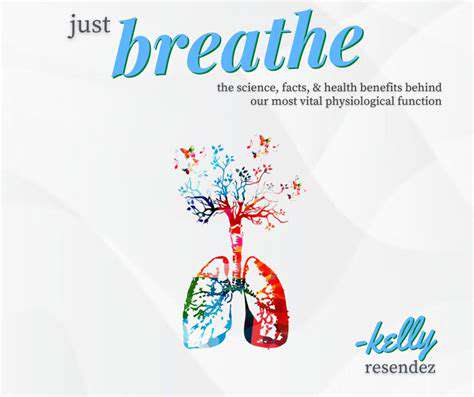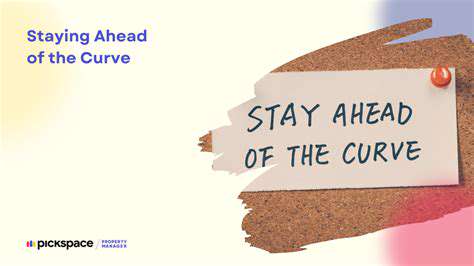Breathwork for Wellness: Journeys of Transformation

The Mechanics of Inhalation and Exhalation
Breathing is something we do without thinking, yet it's a marvel of biological engineering. When we inhale, our chest expands like a bellows, pulling air into the lungs. The diaphragm, that dome-shaped muscle beneath our lungs, does most of the heavy lifting by contracting and flattening out. Meanwhile, the muscles between our ribs (intercostal muscles) help expand our chest cavity. This creates a vacuum effect - nature abhors empty space, so air rushes in to fill it.
Exhalation is more laid-back. The diaphragm and intercostal muscles relax, the chest returns to its normal size, and the lungs' natural elasticity pushes air out. It's like letting go of a stretched rubber band. This automatic give-and-take keeps oxygen flowing to our cells and whisks away carbon dioxide - the body's equivalent of taking out the trash.
The Role of the Lungs in Gas Exchange
Our lungs aren't just big balloons - they're more like intricate sponges filled with millions of tiny air pockets called alveoli. These microscopic sacs are where the real magic happens. Each alveolus is wrapped in a web of capillaries so thin that oxygen and carbon dioxide can slip right through their walls.
Here's how it works: Oxygen from the air we breathe crosses into our blood and hitches a ride on hemoglobin in red blood cells. At the same time, carbon dioxide - the exhaust fumes from our cells' energy production - makes the reverse trip to be exhaled. This silent swap meet happens about 20,000 times a day without us ever noticing.
The Impact of External Factors on Breathing
Our breathing changes to match what we're doing. Run up a flight of stairs? Your breathing speeds up to deliver more oxygen. Sit still reading a book? It slows to a leisurely pace. Altitude throws a curveball - the higher you go, the harder your lungs work to grab enough oxygen from the thin air.
Pollution is like making your lungs breathe through a dirty filter, which can lead to long-term damage. Conditions like asthma add another layer of challenge, sometimes requiring medications to help keep airways open. Understanding these factors helps doctors tailor treatments when breathing goes wrong.
The Importance of Breathing in Overall Health
Breathing does more than just keep us alive - it's the body's built-in stress reliever. Slow, deep breaths tell your nervous system to chill out, lowering heart rate and blood pressure. It's why taking a deep breath actually works when you're upset.
Most of us breathe too shallowly, especially when stressed, which can leave us feeling tired and anxious. Learning to breathe properly - deep into the belly rather than shallow chest breaths - can be transformative for both physical and mental health. Simple practices like counting breaths or focusing on exhaling fully can make a world of difference.
Beyond the Physical: The Impact on Mental and Emotional Well-being
The Calming Influence of Breathwork
Breathwork practices are like a volume knob for your emotions. When life feels chaotic, focusing on the steady rhythm of inhalation and exhalation creates an anchor. This simple act can dial down anxiety and bring a sense of calm even in stressful situations. Over time, it trains your brain to stay present rather than getting caught up in worries about what might happen.
There's a bonus benefit - paying attention to your breath makes you more aware of subtle body sensations. This mind-body connection acts like an early warning system for stress, helping you catch tension before it builds up. It's remarkable how something as simple as breathing can create such profound shifts in awareness.
Breathwork and Emotional Regulation
Ever notice how your breathing changes with your emotions? Anger makes it quick and shallow, sadness might make it shaky. The cool part is this works both ways - changing your breathing can change how you feel. Techniques like box breathing (inhale for 4 counts, hold for 4, exhale for 4) act like a reset button for your nervous system.
These practices aren't about suppressing emotions, but rather creating space to experience them without getting overwhelmed. When you can observe your feelings with the steady rhythm of your breath as background, you gain perspective. Over time, this builds emotional resilience - the ability to weather life's ups and downs with more balance.
The ancient connection between breath and emotion is now backed by science. Regular practice literally rewires how your brain handles stress. It's not a magic cure-all, but it's one of the most accessible tools we have for cultivating emotional well-being in our daily lives.
Read more about Breathwork for Wellness: Journeys of Transformation
Hot Recommendations
- Senior Travel Discounts and Deals
- Personalized Travel for Different Seasons and Climates
- Honeymoon Destinations: Romantic Getaways for Newlyweds
- Mythical Places: Journeys to Legendary Locales
- The Future of Travel Agents in an Automated World
- Sustainable Design for Tourist Infrastructure
- Combatting Illegal Wildlife Trade Through Travel Awareness
- The Best Beaches for Relaxation and Sunbathing
- Marine Conservation: Diving into Responsible Ocean Travel
- Measuring the Social Impact of Tourism











